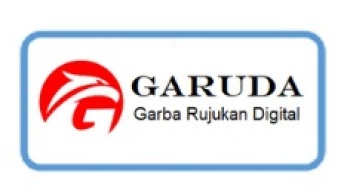CREATIVE DANCE FORM OF OLAN-OLANG FOR LEARNING DANCE AT SMP N 1 DAYUN SIAK DISTRICT RIAU PROVINCE WAHYUNING TIYAS
Abstract
Olang-olang dance is a traditional Malay dance Riau who comes from one of the deepest tribes, the Sakai tribe in Riau Province, precisely in Minas District, Siak Regency. As the name suggests, Olang means Eagle in the Malay dialect. Olang-olang dance used to be used by the Sakai tribe in treatment rituals, when one of the Sakai tribe members was sick, this ritual was held in addition to the existing traditional treatment. The Olang-olang dance depicts the Eagle bird that can fly high into the sky, as a symbol of an intermediary or prayer leader to God. This research describes the creation of olang-olang dance movements used for learning dance art in Junior High School. The method used is qualitative ethnochoreology which refers to the forms of ollang-olang dance movements. Olang-olang dance creations can be used for cultural art teaching materials, especially dance art. The movements in this Olang-Olang dance creation have been standardized to make it easier for students to memorize dance moves. the costume worn on the olang-olang creation is a gold and black nuanced costume that symbolizes luxury, grandeur, and courage.
Keywords
Full Text:
PDFReferences
Aunurrahman. (2014). Belajar dan Pembelajaran. Alfabeta, cv : Bandung
Cone Theresia p. and Cone Stephen L. (2013). Strategies for teaching dancers of all abilities. Rowan university : new jersey.
Cone Theresia p. and Cone Stephen L. (2018). Dance partners making meaningful connections. Routledge : united kingdom.
Cressweel. John W. (2010). Research Design Pendekatan kualitatif, kuantitatif, dan mixed (edisi ketiga). Pustaka Pelajar : Yogyakarta.
Evadilla. 2(013). Nilai Estetika Tata Busana Tari Tradisi Olang-Olang. Staff Pengajar Pendidikan Sendratasik: Universitas Islam Riau.
Hankin, Toby. (2013). Presenting creative dance activities to children : guidelines for the nondancer. University of Colorado : USA.
Helmawati. (2017). Pendidikan karakter sehari-hari. Bandung: Remaja Rosdakarya.
Hidajat, Robby. (2019). Tari Pendidikan Pengajaran Seni Tari untuk Pendidikan. Media Kreativa : Yogyakarta.
Jazuli, M. (1994). Telaah Teoritis Seni Tari. Semarang: IKIP Semarang Press
Layali, Khairul dkk. (2014). Tari Olang-Olang dalam Ritual Pengobatan Suku Sakai di Kecamatan MinasKabupaten Siak. Universitas Padang Panjang:Sumatra Barat.
Maraz, aniko. Dkk. (2015). Why do you dance? Development of the dance motivation inventory (DMI) : United kingdom
McCarthy, Nyama. (2014). Decolonizing dance curriculum in higher education one credit at a time. Indiana university : India.
Rahyubi, Heri. (2014). Teori-Teori Belajar dan Aplikasi Pembelajaran Motorik (Deskripsi dan Tinjauan Kritis). Penerbit Nusa Media : Jawa Barat
Sanjaya, Wina. (2006). Strategi Pembelajaran Berorientasi Standar Proses Pendidakan. Kencana Prenadamedia Group : Jakarta
DOI: https://doi.org/10.17509/jddes.v2i2.51512
Refbacks
- There are currently no refbacks.
Copyright (c) 2022 Universitas Pendidikan Indonesia

This work is licensed under a Creative Commons Attribution-ShareAlike 4.0 International License.
E-ISSN 2776-5326 | P-ISSN 2797-8990
Address:
Program Studi Pendidikan Seni Tari, Fakultas Pendidikan Seni Dan Desain, Universitas Pendidikan Indonesia. Gedung FPSD - Jl. Dr. Setiabudi No.229, Isola, Kec. Sukasari, Kota Bandung, Jawa Barat 40154, Bandung, Provinsi Jawa Barat. (022)200-9198.
JDDES is licensed under a Creative Commons Attribution-ShareAlike 4.0 International License













